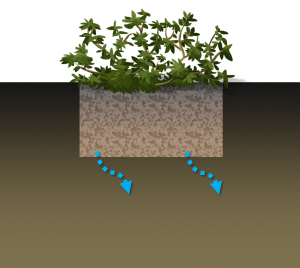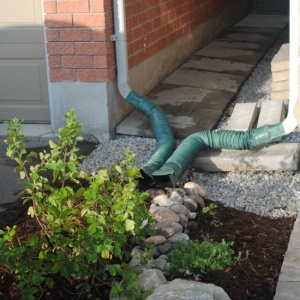Rain gardens
This article is about planted installations designed to capture surface runoff in an amended soil.
For more highly engineered systems, see Bioretention cells.
Overview[edit]
Rain gardens capture roof, lawn and driveway runoff from low to medium density residential lots. These can be simple gardens constructed by the homeowner as a retrofit, or they can be professionally designed into a residential development.
Rain gardens are ideal for:
- Capturing the flow from disconnected downspouts
- Community design/build projects for raising awareness about stormwater capture and functional landscapes
The fundamental components of a rain garden are:
- An amended soil mix
- Suitable planting
Additional components may include:
- A splash pad of rocks to prevent the downspout flow from eroding the soil
- An overflow channel to another are of garden
Planning Considerations[edit]
Design[edit]
Plant Selection[edit]
The design of a rain garden allows for several different planting zones.
| Low Zone | Often referred to as the extended detention or shoreline fringe area. This area is frequently inundated during storm events, and is well-drained between rainfall events. |
|---|---|
| Mid Zone | Often referred to as the floodfringe area. This zone is inundated less frequently (2 – 100 year storm events) and has periodically high levels of moisture in the soil. The ecology of this zone is a transition from the Mineral Meadow Marsh/Beach-type community to an upland community. |
| High Zone | Often referred to as upland area. The ecology of this zone is terrestrial due to its elevation in relation to the filter bed. The zone most closely resembles a Cultural Meadow or a Cultural Thicket community, depending on the mix of grasses, herbaceous material, shrubs and trees utilized. |

